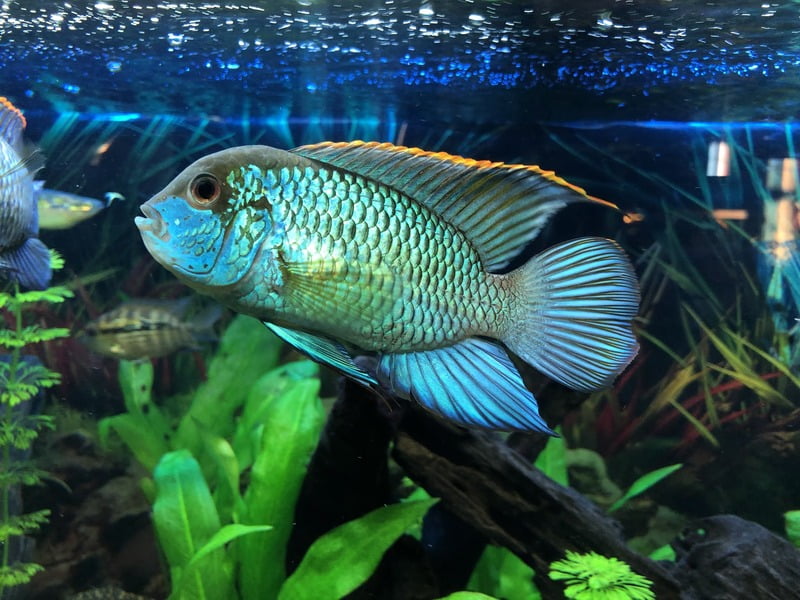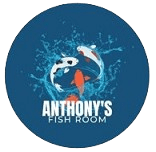
Neon Blue Acara
Andinoacara pulcher, commonly known as the electric blue acara, is a species of cichlid fish native to freshwater habitats in South America. Specifically, it is found in the Orinoco and Caroni River basins in Venezuela and Colombia. The species is popular among aquarium enthusiasts due to its vibrant colors and relatively peaceful nature compared to some other cichlids.
Here are some key features of Andinoacara pulcher:
Coloration: The electric blue acara is known for its striking coloration, which includes shades of blue, green, and iridescent markings on its body. The intensity of the colors can vary among individuals.
Size: Adult electric blue acaras typically reach a length of 6 to 8 inches (15 to 20 centimeters).
Habitat: In their natural habitat, these fish inhabit slow-moving waters, including rivers and tributaries with sandy or gravel bottoms. They are often found in areas with submerged vegetation.
Behavior: While cichlids are generally known for their territorial and aggressive behavior, the electric blue acara is relatively peaceful compared to some other cichlid species. However, they may still display territorial behavior, especially during breeding.
Diet: In captivity, they are omnivorous and can be fed a varied diet, including high-quality pellets, flakes, live or frozen foods such as brine shrimp, bloodworms, and small invertebrates.
Aquarium Requirements: To keep electric blue acaras in captivity, it's recommended to provide them with a well-decorated aquarium that includes hiding places, rocks, and plants. They prefer slightly acidic to neutral water conditions with a temperature range of 75 to 82 degrees Fahrenheit (24 to 28 degrees Celsius).
Breeding: Like many cichlids, electric blue acaras are known to form pairs for breeding. They typically lay their eggs on a flat surface and both parents actively participate in guarding and caring for the eggs and fry.
It's essential to research and understand the specific requirements of electric blue acaras to ensure they thrive in a captive environment. Always consider factors such as water parameters, tank size, and tank mates when setting up an aquarium for these fish



